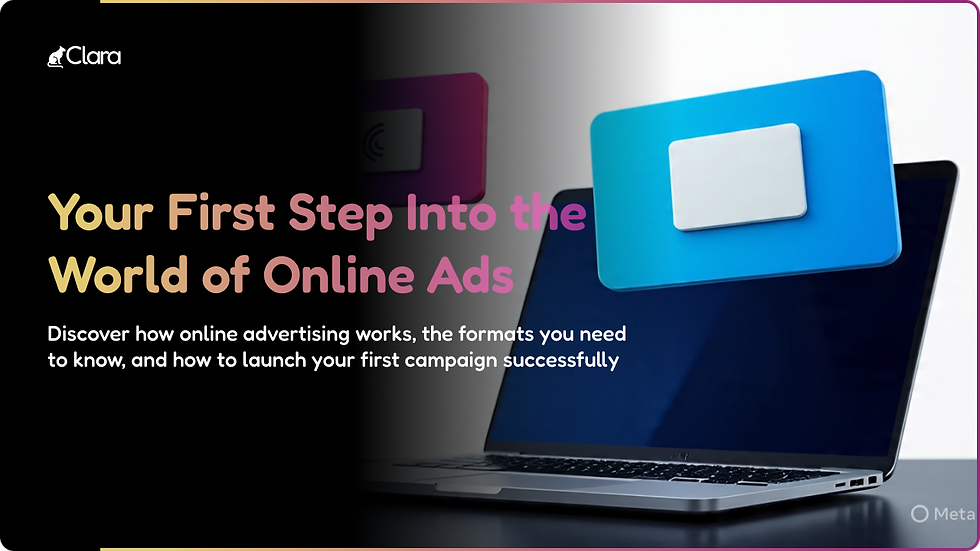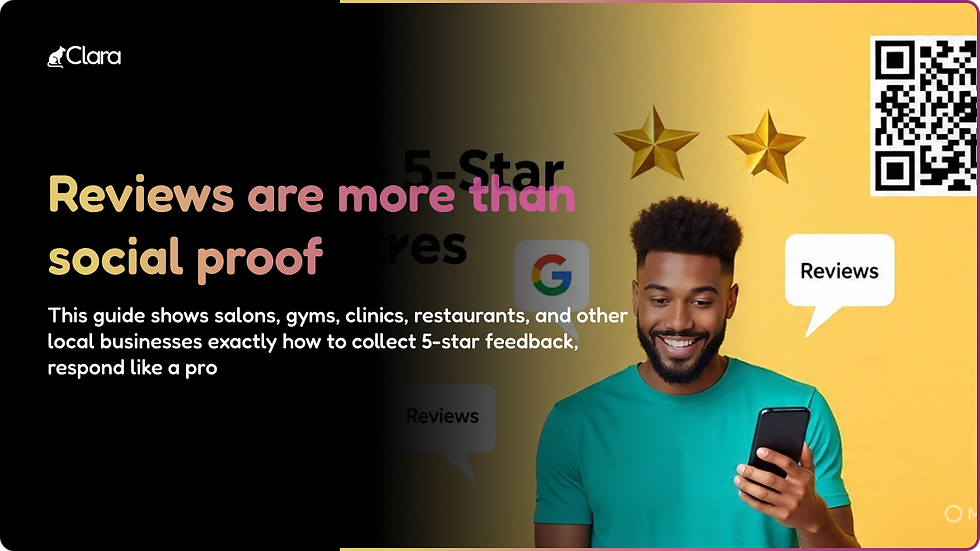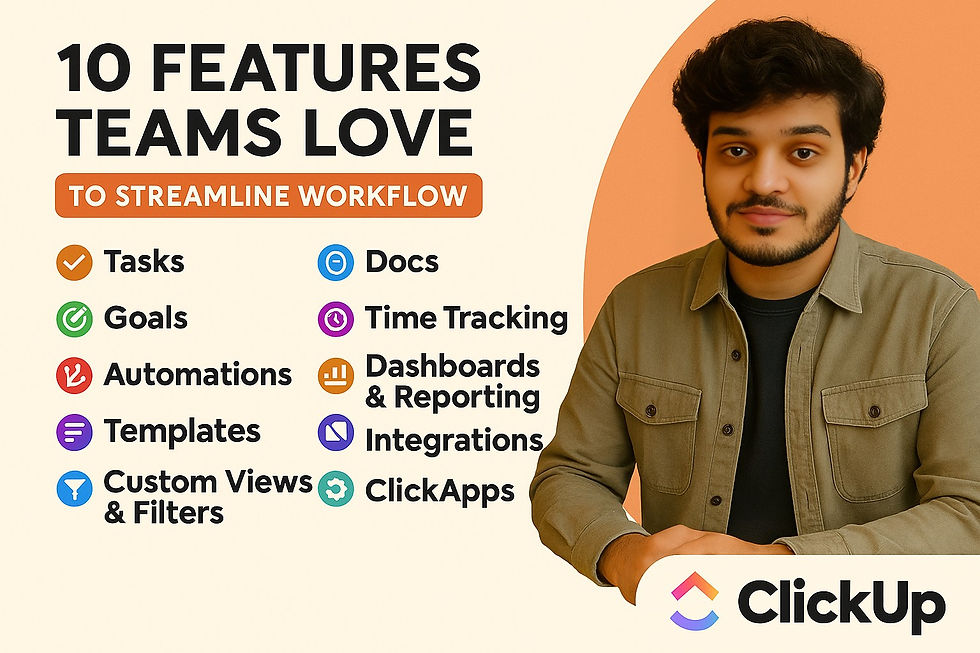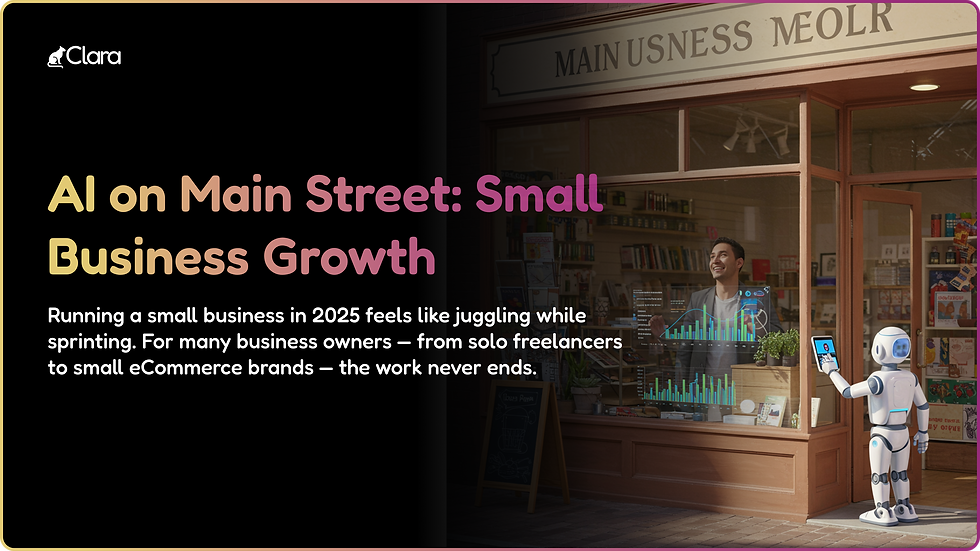- Dravya Bansal
- Jul 10
- 5 min read
In today's fiercely competitive landscape, small businesses often struggle to make their mark. However, with the right marketing strategies, it is possible to carve out a niche and ultimately thrive. This post will focus on ten effective marketing strategies that can help boost your business, particularly if you are a small business owner looking for impactful methods to enhance visibility and grow your customer base.
Small Business Marketing: Understanding Your Audience
The first step in any successful marketing effort is to understand your target audience. Knowing who your customers are, what they need, and how they behave is crucial. Start with conducting market research. Use surveys, focus groups, and data analysis to gather insights about your potential customers. According to HubSpot, businesses that invest in a well-defined audience strategy can enhance their marketing effectiveness by 39%.
For instance, if you’re a small local coffee shop, try to understand who visits: are they busy professionals, students, or families? Tailoring your marketing messages to specific demographics will make them resonate more effectively.

Use Social Media to Your Advantage
Social media platforms are incredibly powerful tools for small businesses. Not only do they provide a space to connect with your customers, but they also allow you to promote your brand and products effectively. With billions of users on platforms like Facebook, Instagram, and Twitter, your customer base is just a post away.
Choose the Right Platforms: Select platforms where your target audience is most active.
Create Shareable Content: Engage your audience by sharing useful, entertaining, or interesting content.
Consistency is Key: Post regularly to keep your audience engaged.
In a survey conducted by Hootsuite, over 70% of small businesses say they use social media to attract new customers. Utilize this trend to your advantage by building an online community around your brand.

What are the 7 Principles of Marketing Strategy?
Understanding the principles of marketing strategy can significantly boost your business acumen. Here are the seven main principles:
Segmentation: Identify different types of customers and tailor offerings to meet their unique needs.
Targeting: Select the market segments you want to focus on.
Positioning: Craft how you want your customers to perceive your brand compared to competitors.
Marketing Mix (4 Ps): Focus on Product, Price, Place, and Promotion to successfully market your business.
Differentiation: Create unique selling points that set you apart from competition.
Branding: Develop a strong brand identity that resonates with your target audience.
Evaluation: Continually assess the effectiveness of your strategies and pivot as necessary.
By focusing on these principles, you can refine your marketing strategies and drive business growth.
Email Marketing: An Underrated Champion
Email marketing is often overlooked but remains an effective way to reach customers directly. According to DMA, email marketing has an ROI of $42 for every dollar spent, making it one of the most cost-effective strategies. Here’s how to execute an effective email marketing campaign:
Build a Targeted Email List: Capture email addresses through your website, social media, and events.
Personalized Content: Use customer data to tailor messages that are relevant to recipients, increasing engagement.
Clear Call-to-Action: Each email should have a specific goal, whether it’s driving traffic to your website, encouraging purchases, or promoting special offers.
Utilizing email marketing can help to maintain customer relationships, promote sales, and keep your audience informed.

SEO: Optimize Your Online Visibility
Search engine optimization (SEO) should be a cornerstone of your marketing strategies. The better your website is optimized, the higher it will rank on search engine results pages. This drives organic traffic to your site. Here are some essential SEO practices:
Keyword Research: Identify and utilize keywords that your potential customers use when searching for your products or services.
Quality Content Creation: Craft informative and engaging content that provides value to visitors.
On-Page and Off-Page SEO: Optimize on-page elements like titles and meta descriptions while building backlinks from reputable websites.
Investing in effective SEO strategies can yield long-term benefits, ensuring your business remains visible.
Content Marketing: Tell Your Story
Creating valuable, relevant content can help attract and retain customers. Content marketing not only establishes your authority in your niche but also develops trust with your audience. Here’s how to implement a strong content marketing strategy:
Blogging: Publish insightful articles that address the queries and concerns of your target audience.
Video Content: Utilize videos to showcase your products, provide tutorials, or convey customer testimonials.
Webinars and Podcasts: Engage your audience through live interactions and discussions on topics relevant to your industry.
By consistently delivering valuable content, your brand will naturally attract more customers and cultivate loyalty.
Utilize Influencer Partnerships
Influencer marketing has skyrocketed in recent years. Collaborating with influencers can quickly expand your reach. To make the most out of influencer partnerships, consider the following:
Choose the Right Influencer: Find someone whose audience aligns with your target market.
Authenticity is Key: Ensure the influencer genuinely likes your product. This authenticity will resonate with their followers.
Collaborative Campaigns: Work together to create meaningful content that highlights your business in an engaging way.
This strategy can provide access to a wider audience and increase brand awareness effectively.
Monitoring and Analytics: Measure Success
Implementing marketing strategies without monitoring their performance is like sailing a ship without a compass. Use analytics tools to assess the success of your campaigns. Here’s what to focus on:
Traffic Sources: Determine where your website visitors are coming from to optimize marketing efforts.
Conversion Rates: Measure how many visitors turn into customers to assess the effectiveness of your strategies.
Engagement Metrics: Track engagement on social media posts to see what resonates with your audience.
Regularly reviewing these metrics allows you to pivot your marketing strategies in real time for better results.
Community Engagement: Build Local Relationships
Building strong relationships within your local community can significantly boost brand loyalty and awareness. Here are some strategies to engage with your community:
Host Local Events: Organize events or workshops that draw in local residents and potential customers.
Collaborate with Other Local Businesses: Partner with other small businesses for cross-promotions and events.
Support Local Causes: Sponsor local charities or events to enhance your brand's image and community relations.
Community engagement not only builds your reputation but also positions you as a brand that cares about its customers and surroundings.
Final Thoughts
In conclusion, adopting these ten effective marketing strategies can significantly enhance your business's growth potential. From utilizing social media to crafting a solid email marketing campaign, each strategy contributes to a well-rounded approach to small business marketing. Remember that consistency and adaptability are vital; the marketing landscape is ever-evolving. Regularly assess your strategies, experiment with new ideas, and most importantly, listen to your customers' needs.
With a focus on understanding your audience, leveraging technology, and engaging with your community, you can set your small business on the path to success. Check out more about marketing strategies to stay updated and continue learning.


















